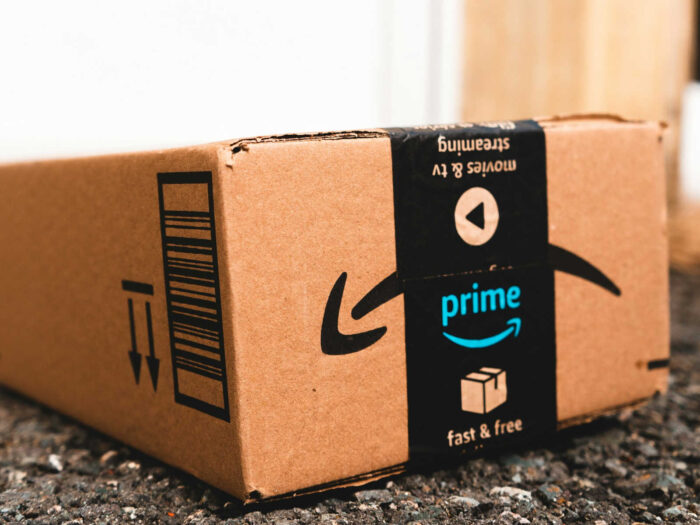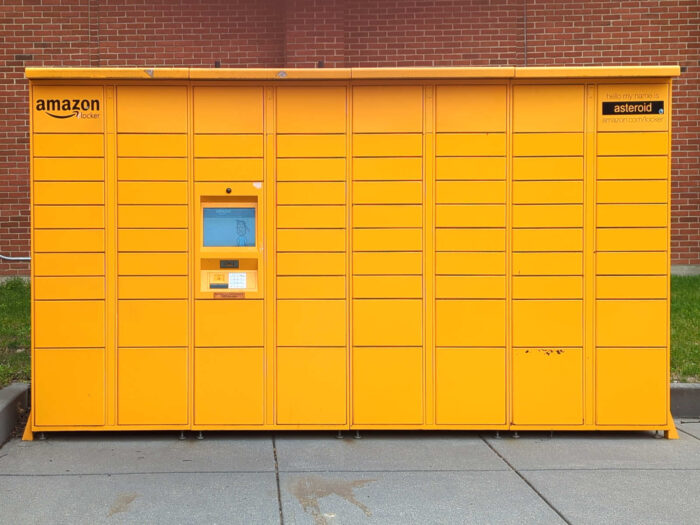
In this Five Forces analysis of Amazon, external factors define industry environments for information technology, consumer electronics, consumer goods, online and brick-and-mortar retail services, entertainment, and other products.
To maintain industry positioning, Amazon’s generic competitive strategy and intensive growth strategies overcome challenges in the company’s business environments, linked to external factors pertinent to Michael Porter’s Five Forces analysis model.
External factors in this Five Forces analysis indicate risks affecting Amazon’s market share and business performance because of strong competition, especially with large multinational retail and technology firms.
Competitive Rivalry or Competition with Amazon (Strong Force)
This aspect of the Five Forces analysis examines the effects of Amazon’s competitors. The following external factors influence the intensity of competition or competitive rivalry in Amazon’s industry environment:
- High aggressiveness of firms in IT, consumer electronics, retail, and other relevant industries (strong force)
- Limited differentiation of firms (moderate-to-strong force)
- Buyers’ low-to-moderate switching costs (moderate-to-strong force)
The force of competition with IT and consumer electronics firms, like Apple, Google (Alphabet), Microsoft, and Samsung, as well as e-commerce and retail firms, like Walmart, Costco, Aldi, Home Depot, and eBay, is addressed through Amazon’s strategies responding to the Five Forces.
Strategically aggressive e-commerce firms exert a strong competitive force against each other. For example, this competitive condition is observable between Amazon and Walmart, which has a significant and expanding e-commerce presence.
Providers of cloud computing services, such as Microsoft Azure and Google Cloud Platform, also aggressively innovate and compete with Amazon. These competitors’ technological capabilities strengthen the force of competitive rivalry in this Five Forces analysis case.
Additional competitive pressure comes from entertainment content production and distribution competitors, like Disney, Netflix, and Sony, as well as Facebook (Meta Platforms), which distributes user-generated content.
On the other hand, the limited differentiation of firms reflects similarities among competitors. For example, Amazon’s online marketplace services have similarities to Walmart’s, and AWS has similarities to Microsoft Azure and Google Cloud Platform.
In this Five Forces analysis case, limited differentiation corresponds to limited barriers to customers’ switching between providers. This condition contributes to the strengthening of the force of competitive rivalry affecting Amazon.
On the other hand, low-to-moderate switching costs strengthen competitive forces against Amazon. In this Five Forces analysis context, low switching costs correspond to low costs (or consequences) for customers when transferring from one provider to another.
Based on the external factors in this aspect of the Five Forces analysis of Amazon, competition is a strategic priority in ensuring the company’s long-term growth and success in the international market.

Bargaining Power of Amazon’s Customers/Buyers (Strong Force)
This aspect of Porter’s Five Forces analysis model determines the influence of customers on firms and the industry environment. The following external factors support the strong intensity of the bargaining power of customers affecting Amazon:
- High quality of information (strong force)
- Customers’ low-to-moderate switching costs (moderate-to-strong force)
- Moderate-to-high availability of substitutes (moderate-to-strong force)
Customers have access to high-quality information about online services, consumer electronics, and other products. In the Five Forces analysis model, this external factor affects Amazon in terms of the ability of customers to easily find alternatives to the company’s products.
Also, for consumer goods and retail, the low switching costs make it easy for customers to transfer from Amazon to other firms, such as Walmart. This factor also applies to entertainment, as customers can switch to Disney+, Netflix, or other streaming services.
Some customers may experience significant switching costs, such as between AWS and competing services. Such situations contribute to a moderate force or bargaining power of customers in this Five Forces analysis case of Amazon.
Moreover, the moderate-to-high availability of substitutes empowers customers to shift from one company to another. For example, instead of purchasing on Amazon’s e-commerce website, a customer can easily go to Walmart’s brick-and-mortar stores.
The external factors in this aspect of the Five Forces analysis show that the strong bargaining power of buyers/customers is a major business challenge in Amazon’s diverse multinational operations.
The customer-centric goals established in Amazon’s mission statement and vision statement emphasize the significance of customers and, consequently, the high-priority status of customers’ bargaining power.
Bargaining Power of Amazon’s Suppliers (Moderate Force)
Suppliers control the availability of supplies or materials Amazon needs for its operations, such as hardware components for servers and information systems. The company’s diverse operations involve suppliers in various industries.
The influence of suppliers on the company’s industry environment is outlined in this aspect of the Five Forces analysis. The following external factors are among the bases for the moderate intensity of suppliers’ bargaining power over Amazon:
- Moderate population of suppliers (moderate force)
- Suppliers’ moderate forward integration (moderate force)
- Moderate size of many suppliers (moderate force)
Suppliers’ moderate population corresponds to their moderate influence on Amazon’s business. A larger population of suppliers would give Amazon more options and reduce suppliers’ bargaining power in this case.
Also, suppliers’ moderate forward integration contributes to their moderate bargaining power over Amazon. In this Five Forces analysis context, moderate (and limited) forward integration equates to suppliers’ moderate control in the distribution of their products to Amazon.
Moreover, the moderate size of many suppliers, such as equipment manufacturers, limits their influence on the company. The size disparity between many suppliers and Amazon empowers the company against supplier power.
Based on this aspect of the Five Forces analysis of Amazon, the external factors emphasize the moderate significance of suppliers as a strategic determinant in the information technology and online service business environment.
This Five Forces analysis characterizes suppliers’ bargaining power as a moderate force. This force impacts Amazon’s operations management and productivity, particularly in the strategic area of supply chain management.

Threat of Substitutes or Substitution (Moderate-to-Strong Force)
This aspect of Porter’s Five Forces analysis model examines substitutes’ effect in the industry environment. In Amazon’s case, the following external factors support the moderate-to-strong threat of substitution:
- Buyers’ low-to-moderate switching costs (moderate-to-strong force)
- Moderate-to-high availability of substitutes (moderate-to-strong force)
- Low-to-moderate cost of substitutes (moderate-to-strong force)
In this Five Forces analysis case, the low-to-moderate switching costs show that customers can transfer with considerable ease from Amazon to substitute providers. For example, shoppers can buy at Walmart stores or other brick-and-mortar retail establishments instead of buying on Amazon’s online marketplace.
Also, customers can watch movies at cinemas instead of through Amazon’s streaming service. Additionally, customers can buy books at brick-and-mortar bookstores or shops instead of buying Kindle e-books.
On the other hand, many AWS customers may face steep costs when switching to substitutes. Some AWS customers may not have substitutes at all, while other customers may find it easy to switch to substitutes. This condition corresponds to the moderate threat of substitution.
For example, for AWS customers with relatively small websites, substitutes include shared web hosting. However, many AWS customers need scalability and compute capabilities that substitutes cannot satisfy.
The high availability of many substitutes and their low prices strengthen their influence on Amazon. Overall, the external factors in this aspect of the Five Forces analysis of Amazon show that the threat of substitution is a major strategic issue in the company’s long-term success.
Threat of New Entrants or New Entry (Weak Force)
New firms have the potential to reduce Amazon’s market share. The effects of new entrants are considered in this aspect of the Five Forces analysis. The following factors are among the determinants of the threat of new entry against Amazon:
- Buyers’ low-to-moderate switching costs (moderate-to-strong force)
- High cost of e-commerce and retail brand development (weak force)
- High economies of scale (weak force)
Amazon’s customers face low-to-moderate switching costs when transferring from the company to new providers. In the Five Forces analysis model, this factor empowers new firms to impose a moderate-to-strong force against the company.
However, the high cost of brand development weakens the influence of new entrants on Amazon’s business performance. For example, new entrants would need years and significant funding to create strong brands that directly compete with Amazon’s brands.
In addition, Amazon benefits from high economies of scale that strengthen its e-commerce business. New entrants need to achieve similarly high economies of scale to effectively compete against the company.
The external factors in this Five Forces analysis indicate that new entrants are a minor strategic issue in Amazon’s business growth and performance in the international market for its technology products and online services.

Summary – Porter’s Five Forces Analysis of Amazon
The external factors evaluated in this Five Forces analysis of Amazon define a business environment and competitive situation that involve the following intensities or strengths of the Five Forces:
- Competitive rivalry or competition: Strong force
- Bargaining power of buyers or customers: Strong force
- Bargaining power of suppliers: Moderate force
- Threat of substitutes or substitution: Moderate-to-strong force
- Threat of new entrants or new entry: Weak force
Amazon competes with a variety of firms, including smaller online retail stores and large information technology firms, online service providers, entertainment production companies, and others players in multiple industries.
Its multinational scale and diverse business scope expose Amazon to a diverse set of external factors. This diversity may present issues in or barriers to strategic implementations for the company’s long-term growth.
Recommendations
To address business issues discussed in this Five Forces analysis, solutions and strategies can capitalize on the competitive advantages and business strengths noted in the SWOT analysis of Amazon.
These recommendations aim at increasing the company’s competitiveness and potential for long-term success in online and brick-and-mortar business environments. Based on this Five Forces analysis, the following are recommendations for Amazon:
Recommendation 1. Further develop Amazon’s ecosystem of products to counteract the threat of substitution and competitive rivalry, which are major forces in this Five Forces analysis case. This recommendation intends to increase customer retention and reduce customers’ switching to competitors.
Recommendation 2. Improve service quality, such as in online retail and delivery to address the bargaining power of customers. For example, counterfeit reduction and delivery service quality upgrades can improve customer experience in using Amazon’s online marketplace.
Recommendation 3. To address competition, especially in developing economies or in new markets, enhancements to Amazon’s marketing mix (4Ps) can strengthen the company’s competitiveness against local or regional firms. These enhancements may include customizations specific to regional or local market conditions.
References
- Amazon.com, Inc. – Form 10-K.
- Amazon.com, Inc. – What We Do.
- Amazon.com, Inc. – Who We Are.
- Isharyani, M. E., Sopha, B. M., Wibisono, M. A., & Tjahjono, B. (2024). Retail technology adaptation in traditional retailers: A technology-to-performance chain perspective. Journal of Open Innovation: Technology, Market, and Complexity, 10(1), 100204.
- Kholik, A., Rahayu, I., Lestari, D. F., Arifah, A. N., & Syifa, R. H. A. (2025, September). The Influence of Product Quality, Price, and Brand Image of Consumer Purchase Decisions in the E-Commerce Industry. In 9th Global Conference on Business, Management and Entrepreneurship (GCBME 2024) (pp. 282-292). Atlantis Press.
- U.S. Department of Commerce – International Trade Administration – Retail Trade Industry.
- U.S. Department of Commerce – International Trade Administration – Software and Information Technology Industry.